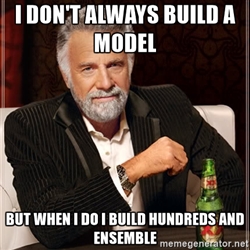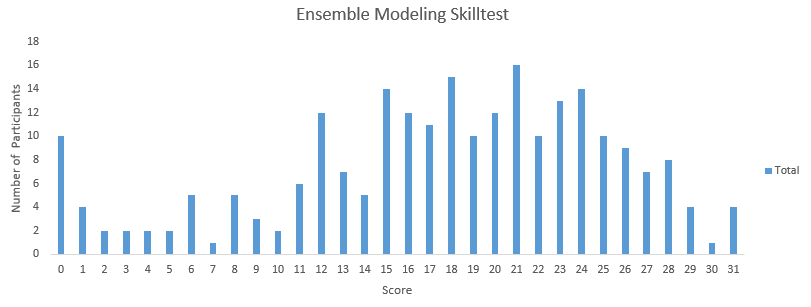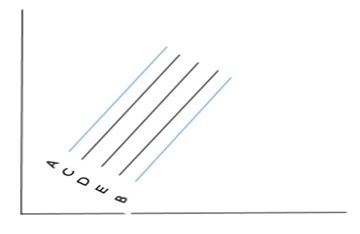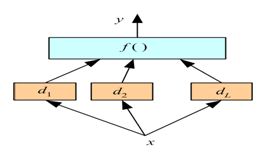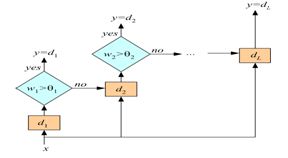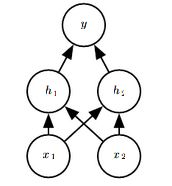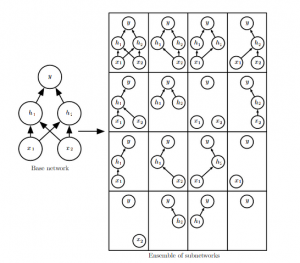Introduction
Ensemble modeling is a powerful way to improve the performance of your machine learning models. If you wish to be on the top of leaderboard in any machine learning competition or want to improve models you are working on – ensemble is the way to go. The meme below kind of summarizes the power of ensembling:
Given the importance of ensemble modeling, we decided to test our community on ensemble modeling. The test included basics of ensemble modeling and its practical applications.
A total of 1411 participants registered for the skill test. If you missed taking the test, here is your opportunity for you to find out how many questions you could have answered correctly.
Read on!
You can access your performance here. More than 230 people participated in the skill test and the highest score was 31. Here are a few statistics about the distribution.
Overall distribution
Mean Score: 17.54
Median Score: 18
Mode Score: 21
Helpful Resources
5 Easy questions on Ensemble Modeling everyone should know
Powerful ‘Trick’ to choose right models in Ensemble Learning
Basics of Ensemble Learning Explained in Simple English
If you are new to ensemble learning, we have you covered – you can enrol in this free course where we cover all the main ensemble modelling techniques in a structured and comprehensive manner: Ensemble Learning and Ensemble Learning Techniques
Questions & Answers
Q1. Which of the following algorithm is not an example of an ensemble method?
A. Extra Tree Regressor
B. Random Forest
C. Gradient Boosting
D. Decision Tree
Option D is correct. In case of decision tree, we build a single tree and no ensembling is required.
Q2. What is true about an ensembled classifier?
1. Classifiers that are more “sure” can vote with more conviction
2. Classifiers can be more “sure” about a particular part of the space
3. Most of the times, it performs better than a single classifier
A. 1 and 2
B. 1 and 3
C. 2 and 3
D. All of the above
In an ensemble model, we give higher weights to classifiers which have higher accuracies. In other words, these classifiers are voting with higher conviction.
On the other hand, weak learners are sure about specific areas of the problem. By ensembling these weak learners, we can aggregate the results of their sure parts of each of them.
The final result would have better results than the individual weak models.
Q3. Which of the following option is / are correct regarding benefits of ensemble model?
1. Better performance
2. Generalized models
3. Better interpretability
A. 1 and 3
B. 2 and 3
C. 1 and 2
D. 1, 2 and 3
Solution: (C)
1 and 2 are the benefits of ensemble modeling. Option 3 is incorrect because when we ensemble multiple models, we lose interpretability of the models.
Q4) Which of the following can be true for selecting base learners for an ensemble?
1. Different learners can come from same algorithm with different hyper parameters
2. Different learners can come from different algorithms
3. Different learners can come from different training spaces
A. 1
B. 2
C. 1 and 3
D. 1, 2 and 3
We can create an ensemble by following any / all of the options mentioned above. So option D is correct.
Q5. True or False: Ensemble learning can only be applied to supervised learning methods.
A. True
B. False
Generally, we use ensemble technique for supervised learning algorithms. But, you can use an ensemble for unsupervised learning algorithms also. Refer this link.
Q
6. True or False: Ensembles will yield bad results when there is significant diversity among the models.
Note: All individual models have meaningful and good predictions.
A. True
B. False
Solution: (B)
An ensemble is an art of combining a diverse set of learners (individual models) together to improvise on the stability and predictive power of the model. So, creating an ensemble of diverse models is a very important factor to achieve better results.
Q7. Which of the following is / are true about weak learners used in ensemble model?
1. They have low variance and they don’t usually overfit
2. They have high bias, so they can not solve hard learning problems
3. They have high variance and they don’t usually overfit
A. 1 and 2
B. 1 and 3
C. 2 and 3
D. None of these
Solution: (A)
Weak learners are sure about particular part of a problem. So they usually don’t overfit which means that weak learners have low variance and high bias.
Q8.True or False: Ensemble of classifiers may or may not be more accurate than any of its individual model.
A. True
B. False
Solution: (A)
Usually, ensemble would improve the model, but it is not necessary. Hence, option A is correct.
Q9. If you use an ensemble of different base models, is it necessary to tune the hyper parameters of all base models to improve the ensemble performance?
A. Yes
B. No
C. can’t say
Solution: (B)
It is not necessary. Ensemble of weak learners can also yield a good model.
Q10. Generally, an ensemble method works better, if the individual base models have ____________?
Note: Suppose each individual base models have accuracy greater than 50%.
A. Less correlation among predictions
B. High correlation among predictions
C. Correlation does not have any impact on ensemble output
D. None of the above
Solution: (A)
A lower correlation among ensemble model members will increase the error-correcting capability of the model. So it is preferred to use models with low correlations when creating ensembles.
Context – Question 11
In an election, N candidates are competing against each other and people are voting for either of the candidates. Voters don’t communicate with each other while casting their votes.
Q.11 Which of the following ensemble method works similar to above-discussed election procedure?
A. Bagging
B. Boosting
C. A Or B
D. None of these
Solution: (A)
In bagged ensemble, the predictions of the individual models won’t depend on each other. So option A is correct.
Q12. Suppose you are given ‘n’ predictions on test data by ‘n’ different models (M1, M2, …. Mn) respectively. Which of the following method(s) can be used to combine the predictions of these models?
Note: We are working on a regression problem
1. Median
2. Product
3. Average
4. Weighted sum
5. Minimum and Maximum
6. Generalized mean rule
A. 1, 3 and 4
B. 1,3 and 6
C. 1,3, 4 and 6
D. All of above
Solution: (D)
All of the above options are valid methods for aggregating results of different models (in case of a regression model).
Context: Question 13 -14
Suppose, you are working on a binary classification problem. And there are 3 models each with 70% accuracy.
Q13. If you want to ensemble these models using majority voting method. What will be the maximum accuracy you can get?
A. 100%
B. 78.38 %
C. 44%
D. 70
Solution: (A)
Refer below table for models M1, M2 and M3.
|
Actual output |
M1 |
M2 |
M3 |
Output |
|
1 |
1 |
0 |
1 |
1 |
|
1 |
1 |
0 |
1 |
1 |
|
1 |
1 |
0 |
1 |
1 |
|
1 |
0 |
1 |
1 |
1 |
|
1 |
0 |
1 |
1 |
1 |
|
1 |
0 |
1 |
1 |
1 |
|
1 |
1 |
1 |
1 |
1 |
|
1 |
1 |
1 |
0 |
1 |
|
1 |
1 |
1 |
0 |
1 |
|
1 |
1 |
1 |
0 |
1 |
Q14. If you want to ensemble these models using majority voting. What will be the minimum accuracy you can get?
B. Always greater than and equal to 70%
C. It can be less than 70%
D. None of these
Solution: (C)
Refer below table for models M1, M2 and M3.
|
Actual Output |
M1 |
M2 |
M3 |
Output |
|
1 |
1 |
0 |
0 |
0 |
|
1 |
1 |
1 |
1 |
1 |
|
1 |
1 |
0 |
0 |
0 |
|
1 |
0 |
1 |
0 |
0 |
|
1 |
0 |
1 |
1 |
1 |
|
1 |
0 |
0 |
1 |
0 |
|
1 |
1 |
1 |
1 |
1 |
|
1 |
1 |
1 |
1 |
1 |
|
1 |
1 |
1 |
1 |
1 |
|
1 |
1 |
1 |
1 |
1 |
Q15. How can we assign the weights to output of different models in an ensemble?
1. Use an algorithm to return the optimal weights
2. Choose the weights using cross validation
3. Give high weights to more accurate models
A. 1 and 2
B. 1 and 3
C. 2 and 3
D. All of above
Solution: (D)
All of the options are correct to decide weights of individual models in an ensemble.
Q16. Which of the following is true about averaging ensemble?
A. It can only be used in classification problem
B. It can only be used in regression problem
C. It can be used in both classification as well as regression
D. None of these
Solution: (C)
You can use average ensemble on classification as well as regression. In classification, you can apply averaging on prediction probabilities whereas in regression you can directly average the prediction of different models.
Context Question 17
Suppose you have given predictions on 5 test observations.
predictions = [0.2,0.5,0.33,0.8]
Which of the following will be the ranked average output for these predictions?
A. [ 0., 0.66666667, 0.33333333, 1. ]
B. [ 0.1210, 0.66666667, 0.95,0.33333333 ]
C. [ 0.1210, 0.66666667, 0.33333333, 0.95 ]
D. None of above
Solution: (A)
The following steps can be applied to get the output in options A
- Given ranking to the predictions
- Scale these ranking using min max scaling
You can follow this code in python to get the desired result.
from sklearn.preprocessing import MinMaxScaler x = np.array([0.2,0.5,0.33, 0.8]) sc = MinMaxScaler() sc.fit_transform(np.argsort(x))
Q18.
In above snapshot, line A and B are the predictions for 2 models (M1, M2 respectively). Now, You want to apply an ensemble which aggregates the results of these two models using weighted averaging. Which of the following line will be more likely of the output of this ensemble if you give 0.7, 0.3 weights to models M1 and M2 respectively.
A) A
B) B
C) C
D) D
E) E
Solution: (C)
Q19. Which of the following is true about weighted majority votes?
2. Inferior models can overrule the best model if collective weighted votes for inferior models is higher than best model
3. Voting is special case of weighted voting
A. 1 and 3
B. 2 and 3
C. 1 and 2
D. 1, 2 and 3
E. None of above
Solution: (D)
All of the statements are true.
Context – Question 20-21
Suppose in a classification problem, you have following probabilities for three models: M1, M2, M3 for five observations of test data set.
|
M1 |
M2 |
M3 |
Output |
|
.70 |
.80 |
.75 |
|
|
.50 |
.64 |
.80 |
|
|
.30 |
.20 |
.35 |
|
|
.49 |
.51 |
.50 |
|
|
.60 |
.80 |
.60 |
Q20. Which of the following will be the predicted category for these observations if you apply probability threshold greater than or equals to 0.5 for category “1” or less than 0.5 for category “0”?
Note: You are applying the averaging method to ensemble given predictions by three models.
A.
|
M1 |
M2 |
M3 |
Output |
|
.70 |
.80 |
.75 |
1 |
|
.50 |
.64 |
.80 |
1 |
|
.30 |
.20 |
.35 |
0 |
|
.49 |
.51 |
.50 |
0 |
|
.60 |
.80 |
.60 |
1 |
B.
|
M1 |
M2 |
M3 |
Output |
|
.70 |
.80 |
.75 |
1 |
|
.50 |
.64 |
.80 |
1 |
|
.30 |
.20 |
.35 |
0 |
|
.49 |
.51 |
.50 |
1 |
|
.60 |
.80 |
.60 |
1 |
C.
|
M1 |
M2 |
M3 |
Output |
|
.70 |
.80 |
.75 |
1 |
|
.50 |
.64 |
.80 |
1 |
|
.30 |
.20 |
.35 |
1 |
|
.49 |
.51 |
.50 |
0 |
|
.60 |
.80 |
.60 |
0 |
D. None of these
Solution: (B)
Take the average of predictions of each models for each observation then apply threshold 0.5 you will get B answer.
For example, in first observation of the models (M1, M2 and M3) the outputs are 0.70,0.80,0.75 if you take the average of these three you will get 0.75 which is above 0.5 that means this observation will belong to class 1.
Q21: Which of the following will be the predicted category for these observations if you apply probability threshold greater than or equals to 0.5 for category “1” or less than 0.5 for category “0”?
|
M1 |
M2 |
M3 |
Output |
|
.70 |
.80 |
.75 |
1 |
|
.50 |
.64 |
.80 |
1 |
|
.30 |
.20 |
.35 |
0 |
|
.49 |
.51 |
.50 |
0 |
|
.60 |
.80 |
.60 |
1 |
B.
|
M1 |
M2 |
M3 |
Output |
|
.70 |
.80 |
.75 |
1 |
|
.50 |
.64 |
.80 |
1 |
|
.30 |
.20 |
.35 |
0 |
|
.49 |
.51 |
.50 |
1 |
|
.60 |
.80 |
.60 |
1 |
C.
|
M1 |
M2 |
M3 |
Output |
|
.70 |
.80 |
.75 |
1 |
|
.50 |
.64 |
.80 |
1 |
|
.30 |
.20 |
.35 |
1 |
|
.49 |
.51 |
.50 |
0 |
|
.60 |
.80 |
.60 |
0 |
D. None of these
Solution: (B)
Take the weighted average of the predictions of each model for each observation then apply threshold 0.5 you will get B answer.
For example, in first observation of models (M1,M2 and M3) the outputs are 0.70,0.80,0.75 if you take the weighted average of these three predictions, you will get 0.745 output (0.70 * 0.4 + 0.80 *0.3 + 0.75* 0.3) which is above 0.5 that means this observation will belong to class 1.
Context: Question 22-23
Suppose in binary classification problem, you have given the following predictions of three models (M1, M2, M3) for five observations of test data set.
|
M1 |
M2 |
M3 |
Output |
|
1 |
1 |
0 |
|
|
0 |
1 |
0 |
|
|
0 |
1 |
1 |
|
|
1 |
0 |
1 |
|
|
1 |
1 |
1 |
Q22: Which of the following will be the output ensemble model if we are using majority voting method?
|
M1 |
M2 |
M3 |
Output |
|
1 |
1 |
0 |
0 |
|
0 |
1 |
0 |
1 |
|
0 |
1 |
1 |
0 |
|
1 |
0 |
1 |
0 |
|
1 |
1 |
1 |
1 |
B.
|
M1 |
M2 |
M3 |
Output |
|
1 |
1 |
0 |
1 |
|
0 |
1 |
0 |
0 |
|
0 |
1 |
1 |
1 |
|
1 |
0 |
1 |
1 |
|
1 |
1 |
1 |
1 |
C.
|
M1 |
M2 |
M3 |
Output |
|
1 |
1 |
0 |
1 |
|
0 |
1 |
0 |
0 |
|
0 |
1 |
1 |
1 |
|
1 |
0 |
1 |
0 |
|
1 |
1 |
1 |
1 |
D. None of these
Solution: (B)
Take the majority voting for the predictions of each model for each observation.
For example for a first observation of models(M1,M2 and M3) the outputs are 1,1,0 if you take the majority voting of these three models predictions you will get 2 votes for class 1 that means this observation will belong to class 1.
Q23. When using the weighted voting method, which of the following will be the output of an ensemble model?
Hint: Count the vote of M1, M2, and M3 as 2.5 times, 6.5 times and 3.5 times respectively.
A.
|
M1 |
M2 |
M3 |
Output |
|
1 |
1 |
0 |
0 |
|
0 |
1 |
0 |
1 |
|
0 |
1 |
1 |
0 |
|
1 |
0 |
1 |
0 |
|
1 |
1 |
1 |
1 |
B.
|
M1 |
M2 |
M3 |
Output |
|
1 |
1 |
0 |
1 |
|
0 |
1 |
0 |
0 |
|
0 |
1 |
1 |
1 |
|
1 |
0 |
1 |
1 |
|
1 |
1 |
1 |
1 |
C.
|
M1 |
M2 |
M3 |
Ouput |
|
1 |
1 |
0 |
1 |
|
0 |
1 |
0 |
1 |
|
0 |
1 |
1 |
1 |
|
1 |
0 |
1 |
0 |
|
1 |
1 |
1 |
1 |
D. None of these
Solution: (C)
Follow the steps in question number 20,21 and 22.
Q24. Which of the following are correct statement(s) about stacking?
- A machine learning model is trained on predictions of multiple machine learning models
- A Logistic regression will definitely work better in the second stage as compared to other classification methods
- First stage models are trained on full / partial feature space of training data
A.1 and 2
B. 2 and 3
C. 1 and 3
D. All of above
Solution: (C)
- In stacking, you train a machine learning model on predictions of multiple base models.
- It is not necessary – we can use different algorithms for aggregating the results.
- First stage models are trained on all the original features.
Q25. Which of the following are advantages of stacking?
- More robust model
- better prediction
- Lower time of execution
A. 1 and 2
B. 2 and 3
C. 1 and 3
D. All of the above
Solution: (A)
Option 1 and 2 are advantages of stacking whereas option 3 is not correct as staking takes higher time.
Q26: Which of the following figure represents stacking?
B.
C. None of these
Solution: (A)
A is correct because it is aggregating the results of base models by applying a function f (you can say a model) on the outputs of d1, d2 and dL.
Q27. Which of the following can be one of the steps in stacking?
1. Divide the training data into k folds
2. Train k models on each k-1 folds and get the out of fold predictions for remaining one fold
3. Divide the test data set in “k” folds and get individual fold predictions by different algorithms
A. 1 and 2
B. 2 and 3
C. 1 and 3
D. All of above
Solution: (A)
The third option is not correct because we don’t create folds for test data in stacking.
Q28. Which of the following is the difference between stacking and blending?
A. Stacking has less stable CV compared to Blending
B. In Blending, you create out of fold prediction
C. Stacking is simpler than Blending
D. None of these
Solution: (D)
Only option D is correct.
Q29. Suppose you are using stacking with n different machine learning algorithms with k folds on data.
Which of the following is true about one level (m base models + 1 stacker) stacking?
Note:
- Here, we are working on binary classification problem
- All base models are trained on all features
- You are using k folds for base models
A. You will have only k features after the first stage
B. You will have only m features after the first stage
C. You will have k+m features after the first stage
D. You will have k*n features after the first stage
E. None of the above
Solution: (B)
If you have m base models in stacking. That will generate m features for second stage models.
Q30. Which of the following is true about bagging?
1. Bagging can be parallel
2. The aim of bagging is to reduce bias not variance
3. Bagging helps in reducing overfitting
A. 1 and 2
B. 2 and 3
C. 1 and 3
D. All of these
Solution: (C)
1. In bagging individual learners are not dependent on each other so they can be parallel
2-3 The bagging is suitable for high variance low bias models or you can say for complex models.
Q31.True or False: In boosting, individual base learners can be parallel.
A. True
B. False
Solution: (B)
In boosting you always try to add new models that correct previous models weaknesses. So it is sequential.
Q32. Below are the two ensemble models:
1. E1(M1, M2, M3) and
2. E2(M4, M5, M6)
Above, Mx is the individual base models.
Which of the following are more likely to choose if following conditions for E1 and E2 are given?
E1: Individual Models accuracies are high but models are of the same type or in another term less diverse
E2: Individual Models accuracies are high but they are of different types in another term high diverse in nature
A. E1
B. E2
C. Any of E1 and E2
D. None of these
Solution: (B)
We have to select E2 because it contains diverse models. So option B is a correct option.
Q33. Suppose, you have 2000 different models with their predictions and want to ensemble predictions of best x models. Now, which of the following can be a possible method to select the best x models for an ensemble?
B. Step wise backward elimination
C. Both
D. None of above
Solution: (C)
You can apply both the algorithms. In step wise forward selection, you will start with empty predictions and will add the predictions of models one at a time if they improve the accuracy of an ensemble. In Step wise backward elimination, you will start with full set of features and remove model predictions one by one if after removing the predictions of model give an improvement in accuracy.
Q34. Suppose, you want to apply a stepwise forward selection method for choosing the best models for an ensemble model. Which of the following is the correct order of the steps?
Note: You have more than 1000 models predictions
1. Add the models predictions (or in another term take the average) one by one in the ensemble which improves the metrics in the validation set.
2. Start with empty ensemble
3. Return the ensemble from the nested set of ensembles that has maximum performance on the validation set
A. 1-2-3
B. 1-3-4
C. 2-1-3
D. None of above
Solution: (C)
Option C is correct.
Q35. True or False: Dropout is computationally expensive technique w.r.t. bagging
B. False
Solution: (B)
Because in dropout, weights are shared and the ensemble of subnetworks are trained together.
Q36.Dropout in a neural network can be considered as an ensemble technique, where multiple sub-networks are trained together by “dropping” out certain connections between neurons.
Suppose, we have a single hidden layer neural network as shown below.
How many possible combinations of subnetworks can be used for classification?
How many possible combinations of subnetworks can be used for classification?
B. 9
C. 12
D. 16
E. None of the above
Solution: (B)
There are 16 possible combinations, of which only 9 are viable. Non-viable are (6, 7, 12, 13, 14, 15, 16).
Q37. How is the model capacity affected with dropout rate (where model capacity means the ability of a neural network to approximate complex functions)?
B. Model capacity decreases in increase in dropout rate
C. Model capacity is not affected on increase in dropout rate
D. None of these
Solution: (B)
The subnetworks have more number of neurons to work with when dropout rate is low. So They are more complex resulting in an increase in overall model complexity. Refer chap 11 of DL book.
Q38. Which of the following parameters can be tuned for finding good ensemble model in bagging based algorithms?
1. Max number of samples
2. Max features
3. Bootstrapping of samples
4. Bootstrapping of features
A. 1 and 3
B. 2 and 4
C. 1,2 and 3
D. 1,3 and 4
E. All of above
Solution: (E)
All of the techniques given in the options can be applied to get the good ensemble.
Q39. In machine learning, an algorithm (or learning algorithm) is said to be unstable if a small change in training data cause the large change in the learned classifiers.
A. True
B. False
Solution: (A)
Refer the introduction part of this paper.
Q40. Suppose there are 25 base classifiers. Each classifier has error rates of e = 0.35.
Suppose you are using averaging as ensemble technique. What will be the probabilities that ensemble of above 25 classifiers will make a wrong prediction?
Note: All classifiers are independent of each other
End Notes
I hope you enjoyed taking the test and found the solutions helpful. The test focused on conceptual as well as practical knowledge of ensemble modeling.
If you have any doubts in the questions above, let us know through comments below. Also, If you have any suggestions or improvements you think we should make in the next skill test, you can let us know by dropping your feedback in the comments section.
Learn, compete, hack and get hired!




